Innovate with Purpose.
We are a student initiative founded in 2020 with the vision to do pioneering work for sustainable mobility systems. For that, we develop passenger capsules that float through partially evacuated tubes at nearly the speed of sound. Our team consists of more than 60 motivated students from the Karlsruhe Institute of Technology, the Karlsruhe University of Applied Sciences, the University of Stuttgart and the Stuttgart Media University.
Our Mission
Our mission goes beyond mere innovation. Here at mu-zero, we harness the power of collaboration to lead the way in the advancement of hyperloop technology.
With a team of a diverse array of talent, each of our members gives a unique perspective. Together, we are working to redefine the way we move, creating a more sustainable and efficient mode of transport.
Through pioneering research and hands-on development, we are pushing the boundaries of technological advancements.
The focus of our work is the conception and development of a functional, levitating Hyperloop prototype, which we present at international competitions and networking events. At the European Hyperloop Week 2021 in Valencia, we were the only German team to achieve top rankings in various disciplines and were awarded as the best newcomer.
Why Hyperloop?
FastExtremely low friction due to low pressure in the tube and a levitation mechanism allow the Hyperloop Pod to reach speeds of over 1000 km/h, making it comparable or even faster than any passenger aircraft currently in use. In addition, the boarding time is very short.
SustainableDue to its high energy efficiency, the Hyperloop is significantly more environmentally friendly than other form of public transport. With greenhouse gas emissions ten times lower than those of an airplane, the Hyperloop can help in addressing climate change.
EfficientAnother advantage of the very low friction in the tube is the high energy efficiency of the Hyperloop system. Together with the energy generated by solar cells on the top of the tube and adequate energy storage, the Hyperloop can be operated completely self-sufficiently.
ConnectedThe Hyperloop can make mobility faster in Europe and all over the world. A trip from Munich to Hamburg that takes six hours by train can be completed in 50 minutes with a Hyperloop. This creates many new opportunities.
Roadmap to zero friction
1
- Evaluation of the overall system of a Hyperloop pod
- Development of a new type of linear induction motor
2
- Concept studies, strategy development, etc.
- Data-driven development & workflow automation
- Digital twin
- Establishment of a platform for scientific exchange in Karlsruhe and Stuttgart (unique in BaWü)
3
- Participation in the European Hyperloop Week and SpaceX Hyperloop Pod Competition
- International contact with student teams
- Participation in congresses, think tanks and symposia
